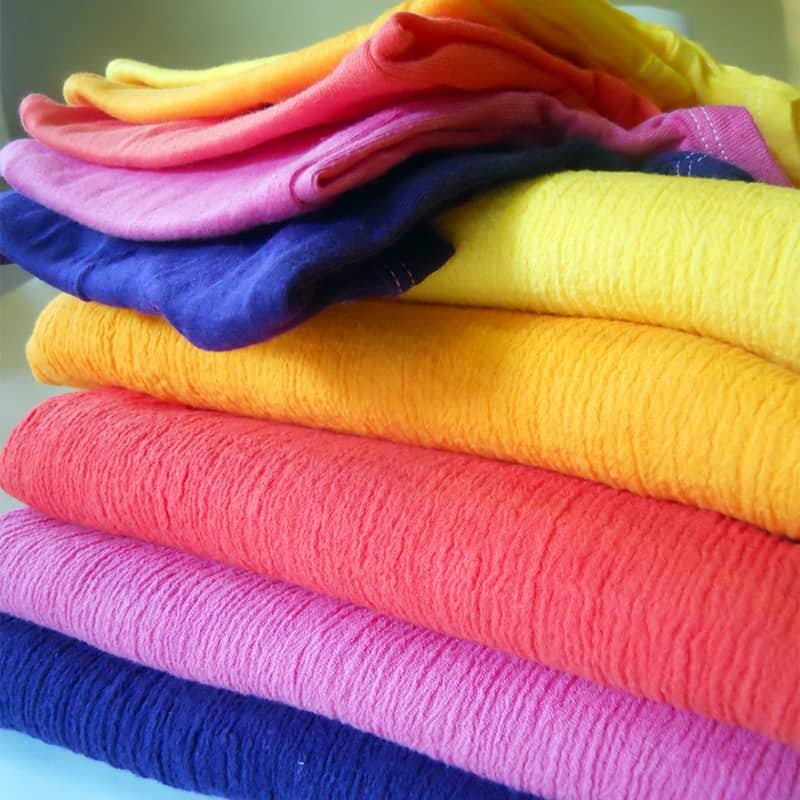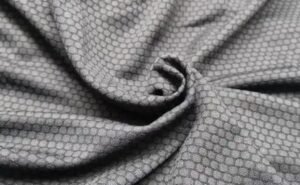Acid dyes

Acid dyes are a type of dye that is used to color a variety of materials, including wool, silk, nylon, and other fibers. They are called “acid” dyes because they are applied using an acidic solution, typically a weak acid like vinegar or citric acid.
One of the main characteristics of acid dyes is that they are highly soluble in water, making them easy to apply and rinse out. They are also effective at penetrating the fibers of the material being dyed, resulting in even, consistent color.
There are many different colors of acid dyes available, including a wide range of shades and tones. They can be mixed together to create an even wider range of colors, making them very versatile. Acid dyes are also very colorfast, meaning they are resistant to fading or bleeding when exposed to sunlight or water.
In addition to coloring fibers, acid dyes are also used to dye a variety of other materials, including leather and plastic. They are often used in the production of textiles, clothing, and other products, as well as in the laboratory for a variety of purposes.
One of the main drawbacks of acid dyes is that they can be harmful to the environment if they are not properly handled and disposed of. They can also be harmful to humans if they come into contact with the skin or are ingested. However, when used responsibly and in accordance with safety guidelines, acid dyes can be a useful and effective tool for coloring a variety of materials.
Overall, acid dyes are a widely used type of dye that is effective at coloring a variety of materials, including fibers, leather, and plastic. They are easy to apply, provide consistent and even color, and are resistant to fading and bleeding. However, it is important to handle and dispose of acid dyes responsibly to minimize any negative impacts on the environment and human health.
Disperse dyes

Disperse dyes are a type of dye that is water insoluble and is used to dye synthetic fibers such as polyester, nylon, and acrylic. These dyes are also known as “hot water dyes” because they are applied to fabrics at high temperatures, typically between 140 and 220 degrees Fahrenheit.
Disperse dyes are very fine particles, usually less than one micron in size, and are suspended in water to form a slurry. The high temperature of the dye bath helps to dissolve the dyes and allows them to penetrate the fibers of the fabric. The dye particles are then attracted to the fibers through electrostatic forces and are held in place by the high temperature of the dye bath.
One of the advantages of disperse dyes is that they can produce bright, vibrant colors on synthetic fabrics. They are also highly resistant to fading and bleeding, making them a popular choice for clothing and other items that are subjected to frequent washing and wear.
There are several different methods for applying disperse dyes to fabrics, including continuous dyeing, batch dyeing, and printing. Continuous dyeing is a process in which the fabric is continuously fed through a series of dye baths, while batch dyeing involves dyeing small quantities of fabric at a time. Printing is a method in which the dye is applied to the fabric in a specific pattern or design.
Disperse dyes are classified based on their level of difficulty to apply and the type of synthetic fiber they are used on. There are three main categories of disperse dyes: low energy, medium energy, and high energy. Low energy dyes are the easiest to apply and are used on fibers with a low affinity for dye, such as nylon. Medium energy dyes are used on fibers with a moderate affinity for dye, such as polyester, and high energy dyes are used on fibers with a high affinity for dye, such as acrylic.
In conclusion, disperse dyes are a type of dye that is used to color synthetic fibers such as polyester, nylon, and acrylic. They are applied at high temperatures and produce bright, vibrant colors that are resistant to fading and bleeding. Disperse dyes are classified based on their level of difficulty to apply and the type of synthetic fiber they are used on.
All-purpose dyes

All-purpose dyes are a type of dye that can be used to color a variety of materials, including natural fibers like wool, cotton, and silk, as well as synthetic fibers like polyester and nylon. These dyes are available in a range of colors and are suitable for use in a variety of applications, such as dyeing clothes, fabrics, and other household items.
One of the main advantages of all-purpose dyes is their versatility. They can be used to dye a wide range of materials, including both natural and synthetic fibers, making them a convenient choice for those who need to dye multiple types of materials. In addition, all-purpose dyes are usually easy to use and do not require any special equipment or techniques.
All-purpose dyes can be applied using several methods, including immersion, tie-dye, and screen printing. Immersion involves submerging the material to be dyed in a dye bath, while tie-dye involves applying the dye directly to the material using a variety of techniques, such as folding, twisting, or scrunching. Screen printing involves using a stencil and a squeegee to apply the dye to the material.
All-purpose dyes are available in a range of colors, from bright and bold to subtle and subdued. They can be mixed to create custom colors, and can also be used to create patterns and designs on fabric.
One of the main drawbacks of all-purpose dyes is that they may not be as colorfast as other types of dyes. This means that the color may fade over time or bleed when the material is washed. It is important to follow the manufacturer’s instructions carefully when using all-purpose dyes to ensure the best possible results.
Overall, all-purpose dyes are a convenient and easy-to-use option for those who need to dye a variety of materials. While they may not be as long-lasting as other types of dyes, they offer a range of colors and are suitable for use in a variety of applications.
Azoic dyes

Azoic dyes, also known as azo dyes or synthetic dyes, are a class of synthetic organic pigments that contain the nitrogen-based azo group (-N=N-) as a part of their chemical structure. They are widely used in the textile industry to dye fabrics and fibers, and are known for their brightness and colorfastness. Azoic dyes are also used in the food, cosmetic, and pharmaceutical industries.
There are two main types of azoic dyes: direct azo dyes and reactive azo dyes. Direct azo dyes are applied directly to the fiber or fabric and are generally not very colorfast. Reactive azo dyes, on the other hand, form a covalent bond with the fiber or fabric, making them more colorfast.
Azoic dyes are made by reacting a diazonium compound with an aromatic amine or phenol. The diazonium compound is typically prepared by reacting an aromatic amine with nitrous acid. The resulting compound is then treated with an aromatic compound, such as a phenol or aniline, to form the azo dye.
Azoic dyes have been the subject of controversy because some of them can break down under certain conditions to release aromatic amines, which are potential carcinogens. As a result, there are regulations in place in many countries that restrict the use of certain azoic dyes in products that may come into contact with the skin or be ingested.
Despite the potential health concerns, azoic dyes are still widely used because of their ability to produce a wide range of bright and vibrant colors. They are also relatively cheap and easy to produce on a large scale, making them an attractive option for the textile industry. However, there has been a growing trend in recent years towards the use of natural dyes and pigments as an alternative to azoic dyes, due to concerns about their potential health effects and the environmental impact of their production.
Mordant dyes

Mordant dyes, also known as chrome dyes, are a type of dye that requires the use of a mordant in order to fix the color to the fabric or fiber. A mordant is a chemical compound that helps the dye bond to the material being dyed. Common mordants include aluminum, chromium, copper, iron, and tin.
Mordant dyes are often used to dye natural fibers such as wool, silk, and cotton, and are known for their durability and colorfastness. They are also used to dye leather and other materials.
There are two main types of mordant dyes: substantive and adjective. Substantive mordant dyes are applied directly to the fabric or fiber and bond with it directly, while adjective mordant dyes require the use of a mordant in order to bond with the material.
One of the advantages of mordant dyes is that they can produce a wide range of colors, including bright, vibrant shades that are difficult to achieve with other types of dyes. They are also relatively easy to apply and are resistant to fading and washing.
However, mordant dyes have some drawbacks as well. They can be harmful to the environment, as the mordants used in the dyeing process can potentially leach into waterways and soil. They also require the use of chemicals to fix the color to the material, which can be hazardous to workers in the dyeing industry. In addition, some mordant dyes can be irritating to the skin and may cause allergic reactions in some individuals.
Despite these concerns, mordant dyes are still widely used due to their durability and ability to produce a wide range of colors. However, there has been a growing trend in recent years towards the use of natural dyes and pigments as an alternative, due to concerns about the environmental impact and potential health effects of mordant dyes.
Cationic dyes

Cationic dyes are a class of dyes that have a positive charge, or cation, in their chemical structure. They are mainly used to dye synthetic fibers such as polyester, nylon, and acrylic, as well as some natural fibers such as wool and silk.
Cationic dyes are applied in an acidic solution, which helps to fix the color to the fiber. They are typically used in conjunction with a mordant, which is a chemical compound that helps to improve the bonding of the dye to the fiber.
One of the main advantages of cationic dyes is that they are very colorfast and resistant to fading, making them a good choice for fabrics that will be subjected to frequent washing or exposure to sunlight. They are also resistant to bleeding, which means that they are less likely to transfer their color to other materials when they come into contact with them.
Cationic dyes are also relatively easy to apply and produce a wide range of colors, including bright, vibrant shades. However, they can be more expensive than other types of dyes, and they may not be suitable for all types of fibers.
There are some concerns about the environmental impact of cationic dyes, as they can potentially leach into waterways and soil if they are not disposed of properly. In addition, some cationic dyes may be irritating to the skin and may cause allergic reactions in some individuals. Despite these concerns, cationic dyes are still widely used due to their durability and colorfastness.







